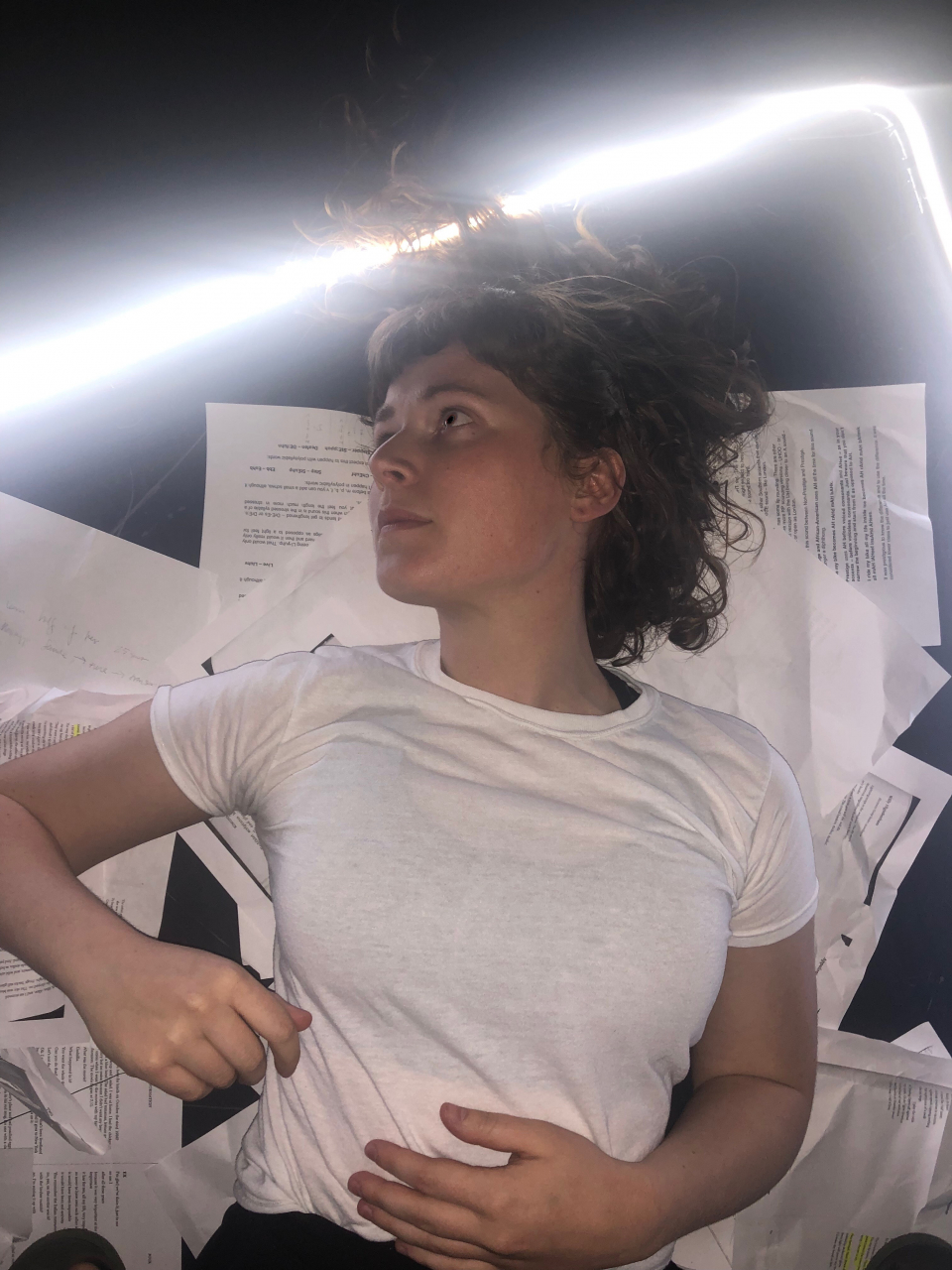Of all the gifts the ATP gave me, the ability to create my own work is one of my most cherished.
My formal introduction to composition and original work began my 2nd year of undergrad. Under the guidance of our fearless faculty mentor, myself and nine other students devised a show almost entirely comprised of material we’d generated via composition prompts. The process at times felt erratic and tangential, but every moment of it served to texture the work, some composition pieces presenting literally, some living in the shadows of the piece.
I can say with complete confidence, it was unlike any other way I’d worked before.
Time, plenty of experimenting, and lots of good old fashioned failures have carried me beyond that initial project and into my own work. Over the years my text collection has deflected from that of a classically trained actor to reflect an emerging, eclectic devisor. But in all my menagerie of workbooks, I have yet to find a golden formula detailing how to fold composition pieces into larger works. I’m eons away from establishing my own methodology, but in articulating how I’m beginning to approach this task, the vocab that interests me most is connective tissue and constellations.
Running parallel to my last year in the ATP was my massage therapist training, and with it, my intro and subsequent fixation with connective tissue. Connective tissue presents differently depending where in the body its found, but it’s fundamental function remains the same: it connects tissues. Every muscle, bone, organ, and nerve is embraced and unified by connective tissue. It literally holds us together. In approaching original work, I think our job as devisors can be taking the bits and bones of composition pieces and laying down the connective tissue to unify a series into a whole. Some bones are more prominent than others (in bodywork we call these bony landmarks), but it’s the deeper systems that provide the organism its structural integrity. Visible or buried, each piece works in tandem to aid the function of the whole. An example of a work I feel lives in this realm is the National Theatres Jane Eyre- there are moments where composition work bubbles to the surface, but more than composition I see a body at work.
On the other hand are constellations. If each composition is an independent point of reference, a star, our job is to receive a field of light and selectively chart a path. I love the sentimentality of star informed navigation, that constellations have a sense of reorientation and forward motion. They take us somewhere we were not. Frantic Assembly’s Lovesong, a relationship depicted over a collage of composition work, is a show that presents like a constellation to me.
The commonality I’ve arrived at for these metaphors is that it takes an incredible amount of pressure to create bone or star. The products and processes vary, but the pressure is always exquisite. The same can be said for creating new work, whether it resemble bodies or constellations. It’s the capability to manufacture and thrive under pressure that I carry into these next chapters of my career. I’m grateful for the lessons I’ve learned and those I have yet to encounter, but for now it’s time to get back to work. Pressure’s on.
by Emily Nash, Actor Training Program class of 2019


